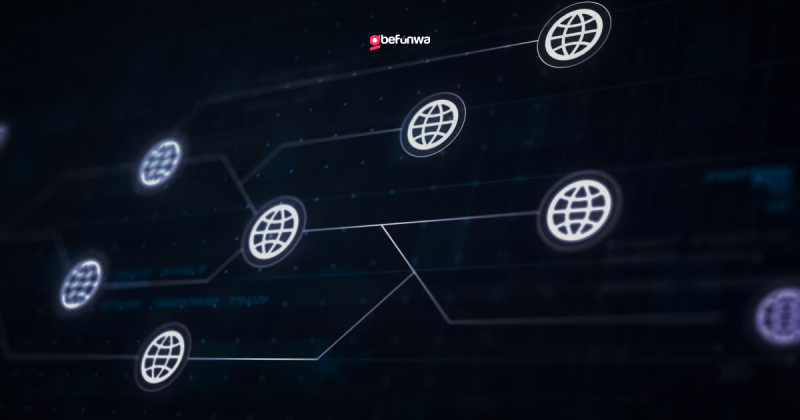
WordPress Multisite is a powerful feature that allows you to run multiple WordPress sites from a single installation. Whether you’re managing a network of blogs, a corporate site with subsites, or a community of user blogs, Multisite can simplify administration and maintenance. This guide will walk you through the steps to set up and configure a WordPress Multisite network.
WordPress Multisite is a feature that allows you to create a network of sites within a single WordPress installation. Each site in the network shares the same WordPress core files but has its own separate directory for media uploads and can have separate tables in the database.
Before you start, ensure your hosting environment meets the following requirements:
It’s crucial to back up your existing WordPress site before making any significant changes. Use a plugin like UpdraftPlus or manually back up your files and database.
Deactivate all active plugins to avoid conflicts during the setup process. You can reactivate them after the network is set up.
To enable Multisite, you need to edit your `wp-config.php` file, which is located in the root directory of your WordPress installation.
1. Open `wp-config.php` using an FTP client or file manager.
2. Add the following line above the line that says “/ That’s all, stop editing! Happy publishing. /”: “`php define(‘WP_ALLOW_MULTISITE’, true); “`
After enabling Multisite, you’ll see a new menu item in your WordPress dashboard under `Tools` called `Network Setup`.
After clicking `Install`, WordPress will provide code snippets to add to your `wp-config.php` and `.htaccess` files.
1. Add the provided code to `wp-config.php`: “`php define(‘MULTISITE’, true); define(‘SUBDOMAIN_INSTALL’, false); // Set to true if using subdomains define(‘DOMAIN_CURRENT_SITE’, ‘example.com’); define(‘PATH_CURRENT_SITE’, ‘/’); define(‘SITE_ID_CURRENT_SITE’, 1); define(‘BLOG_ID_CURRENT_SITE’, 1); “`
2. Add the provided code to your `.htaccess` file, replacing any existing WordPress rules: “`apache RewriteEngine On RewriteBase / RewriteRule ^index\.php$ – [L] add a trailing slash to /wp-admin RewriteRule ^wp-admin$ wp-admin/ [R=301,L] RewriteCond %{REQUEST_FILENAME} -f [OR] RewriteCond %{REQUEST_FILENAME} -d RewriteRule ^ – [L] RewriteRule ^(wp-(content|admin|includes)/) $1 [L] RewriteRule ^(.\.php)$ $1 [L] RewriteRule . index.php [L] “`
Log out and log back in to access the Network Admin Dashboard. You’ll find it under `My Sites` > `Network Admin`.
To add a new site to your network:
From the `Sites` menu, you can manage all the sites in your network. Click on a site to access options to edit settings, view the dashboard, or delete the site.
In a Multisite network, only Super Admins can install themes and plugins. Once installed, themes and plugins can be enabled network-wide or on a per-site basis.
1. To install a theme, go to `Themes` > `Add New` in the Network Admin dashboard.
2. To install a plugin, go to `Plugins` > `Add New`.
To make a theme available to all sites:
1. Go to `Themes` in the Network Admin dashboard.
2. Click `Network Enable` under the desired theme.
To make a plugin available network-wide:
1. Go to `Plugins` in the Network Admin dashboard.
2. Click `Network Activate` under the desired plugin.
Domain mapping allows you to map custom domains to individual sites in your network.
1. Install and network-activate the Mercator plugin or WordPress MU Domain Mapping plugin.
2. Configure the plugin settings to map domains to specific sites.
In a Multisite network, you can assign different roles to users for each site. This allows for granular control over what users can do on each site.
While you can network-activate plugins, you might want to activate some plugins only on specific sites. To do this:
1. Go to the dashboard of the specific site.
2. Navigate to `Plugins` and activate the desired plugin.
Multisite networks can become resource-intensive. Consider the following optimizations:
If you encounter issues with permalinks, try resetting them:
1. Go to `Settings` > `Permalinks` in the Network Admin dashboard.
2. Save changes without making any modifications.
Increase the PHP memory limit by adding the following line to your `wp-config.php` file:“`phpdefine(‘WP_MEMORY_LIMIT’, ‘256M’);“`
Increase the upload size limit by adding the following lines to your `php.ini` file:“`iniupload_max_filesize = 64Mpost_max_size = 64M“`
Setting up a WordPress Multisite network is a powerful way to manage multiple sites from a single dashboard. By following the steps outlined in this guide, you can create and configure a Multisite network, allowing you to efficiently manage multiple sites and streamline your workflow. Whether you’re running a network of blogs, managing a corporate site, or building a community, Multisite offers the flexibility and scalability you need to succeed. Happy managing!
Deborah Oludimu is an experienced content writer with 3+ years of experience. She is skilled in research, writing, and editing to produce high-quality, engaging content across industries. Deborah is passionate about creating content that informs and inspires
© 2025 GBEFUNWA.COM. All rights reserved.
The WordPress® trademarks are the intellectual property of the WordPress Foundation, and the Woo® and WooCommerce® trademarks are the intellectual property of WooCommerce, Inc. Uses of the WordPress®, Woo®, and WooCommerce® names in this website are for identification purposes only and do not imply an endorsement by WordPress Foundation or WooCommerce, Inc. gbefunwa is not endorsed or owned by, or affiliated with, the WordPress Foundation or WooCommerce, Inc.